Enhanced transport infrastructure takes us anywhere and everywhere
11 November 2018
With its well-developed road networks, Hong Kong is one of the places having the heaviest traffic in the world. In response to the needs of social and economic development as well as changes in traffic demand, the Government has embarked on a number of large-scale transport infrastructure projects, some of which will be commissioned within one to two years.
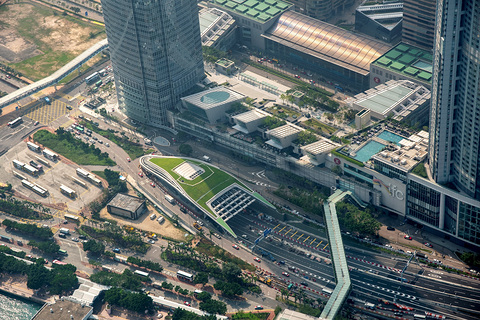 |
| Central-Wan Chai Bypass and Island Eastern Corridor Link - the tunnel portal in Central and the west ventilation building |
First of all, the Central-Wan Chai Bypass and Island Eastern Corridor Link (the Bypass), which will provide an east-west express link for the Central and Wan Chai districts, is expected to be open to vehicular traffic by the first quarter of next year (2019).
Currently, the traffic between Central and Causeway Bay is very heavy, particularly on Connaught Road Central, Harcourt Road, Gloucester Road and Island Eastern Corridor, where traffic jams are frequent. Once there are traffic queues or accidents at the bottlenecks of these roads, rapid deterioration of traffic conditions or even a complete blockage in the local network seems inevitable.
Upon commissioning of the Bypass, it will only take five minutes to drive from Central to Island Eastern Corridor, relieving the pressure on the east-west traffic on the Hong Kong Island.
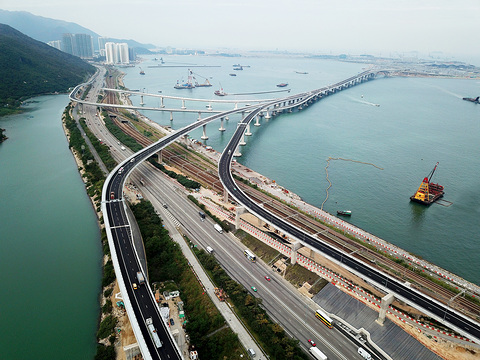 |
| The Southern Connection of TM-CLKL - an aerial view of the viaducts |
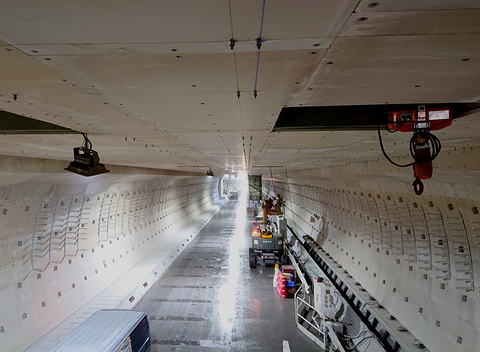 |
| The Northern Connection of TM-CLKL - the sub-sea tunnel under construction |
The enormous scale of work and high technical complexity of TM-CLKL are unprecedented. Its sub-sea tunnel will be the longest one in Hong Kong. It is the first time that a large boring machine with a diameter of 17.6 m is used in Hong Kong for a sub-sea tunnel. The diameter is more or less equal to the height of a six-storey building or of four double-deckers being piled up. The use of such a giant tool, which is the largest tunnel boring machine in the world, tells of a breakthrough in the engineering industry of Hong Kong.
The travel distance from North West New Territories (NWNT) to Lantau is considerably long. When fully completed, the Tuen Mun-Chek Lap Kok Link (TM-CLKL) will provide a new strategic access connecting NWNT, the Hong Kong Boundary Crossing Facilities of Hong Kong-Zhuhai-Macao Bridge (HZMB), North Lantau and the Hong Kong International Airport, enhancing traffic re-distribution among Tuen Mun Road, Ting Kau Bridge, Lantau Link and North Lantau Highway. By then, the journey time between NWNT (including Tuen Mun, Tin Shui Wai and Yuen Long) and Lantau will be shortened from about 30 minutes to about 10 minutes.
The TM-CLKL, which is about 9 km long in total, consists of land viaducts of about 1.9 km long and marine viaducts of about 1.6 km long in its Southern Connection, and a sub-sea tunnel of about 5 km long in its Northern Connection. The mainline of the Southern Connection, i.e. the section between the Hong Kong Boundary Crossing Facilities of HZMB and the North Lantau Highway (urban bound) was opened on 24 October 2018 to dovetail with the commissioning of HZMB, whereas construction works are well underway for early commissioning of the section linking the Northern Lantau Highway (Tung Chung bound) in 2018. As for the Northern Connection, it is expected that the construction works will be completed by 2020 at the earliest.
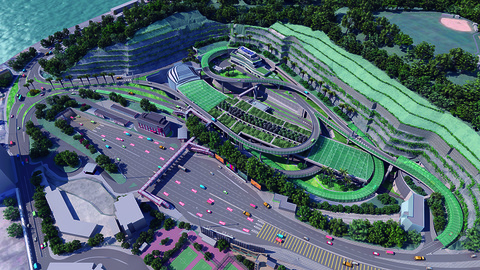 |
| TKO-LT Tunnel - main tunnel entrance/exit in Yau Tong and Lam Tin Interchange |
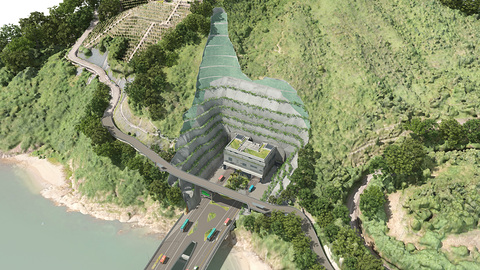 |
| TKO-LT Tunnel - main tunnel entrance/exit in Tseung Kwan O |
With the commissioning of HZMB, the expansion of Tung Chung new town, the completion of the Third Runway System Project at our international airport in 2024 and the implementation of various infrastructure projects, abundant employment opportunities will be created. After the TM-CLKL is completed, NWNT residents commuting between Tuen Mun and Chek Lap Kok will find it more convenient. The road transport pressure on the airport island caused by the commissioning of HZMB will also be relieved.
Meanwhile, we are taking forward the Tseung Kwan O-Lam Tin Tunnel (TKO-LT Tunnel) project actively, aiming to complete the construction works and provide a new major corridor linking Tseung Kwan O and East Kowloon by 2021. Also, the travel distance between Tseung Kwan O and the Eastern Harbour Crossing will be reduced substantially from about 7 km to about 4.2 km, saving about 8 to 9 minutes’ journey time during the rush hours.
To facilitate pedestrian access, we are undertaking to retrofit barrier-free access facilities under the Universal Accessibility Programme for eligible footbridges, elevated walkways and pedestrian tunnels. As at the end of October this year, there are 250 projects of retrofitting barrier-free access facilities across the districts, of which 94 have been completed, 97 are under construction and the remaining 59 are undergoing investigation or design work.
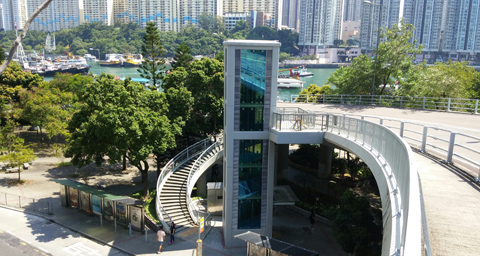 |
| Universal Accessibility Programme - retrofitting a lift for the elevated walkway linking Tin Wan Praya Road and Tin Wan Hill Road |
We announced in this year’s Policy Address that, apart from the 250 projects underway, we will commence a feasibility study in the first half of 2019 on lift retrofitting proposals at the remaining 120 or so eligible walkways across the districts. We aim to take forward those feasible items expeditiously so as to benefit the elderly and people in need. The Government will also conduct a review in 2019 to explore whether there is any scope for further expansion of the Universal Accessibility Programme.

